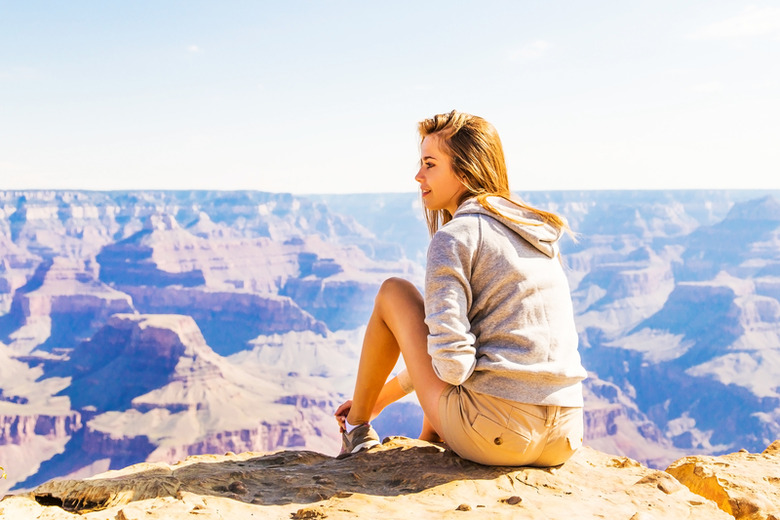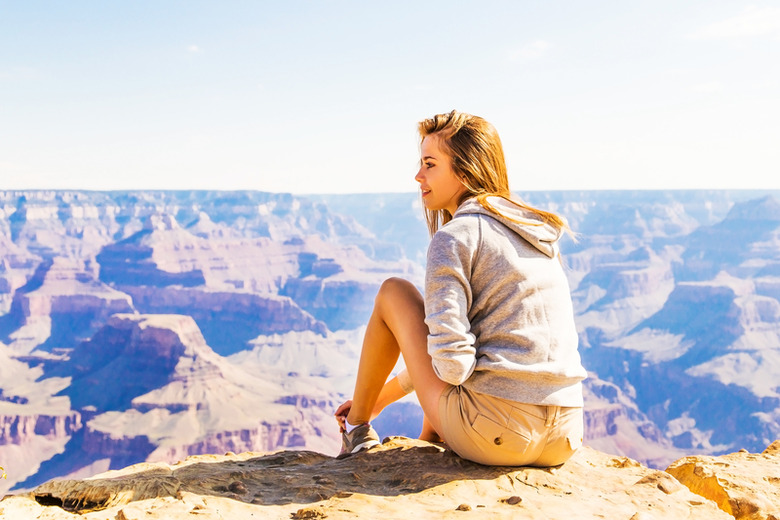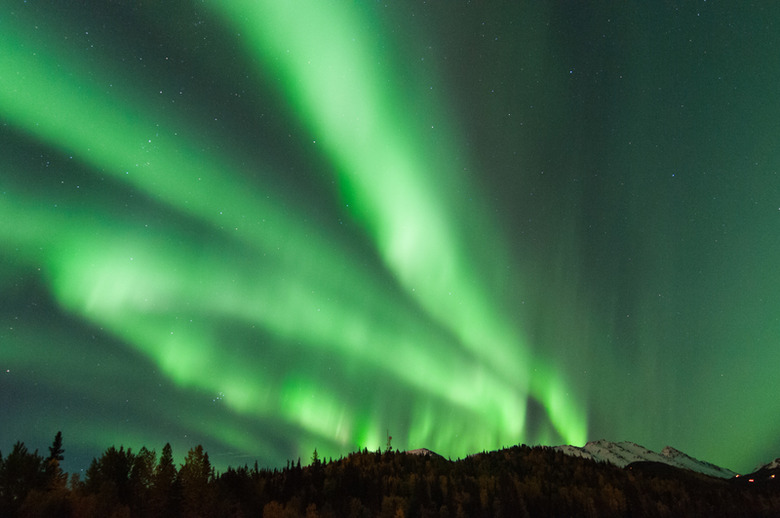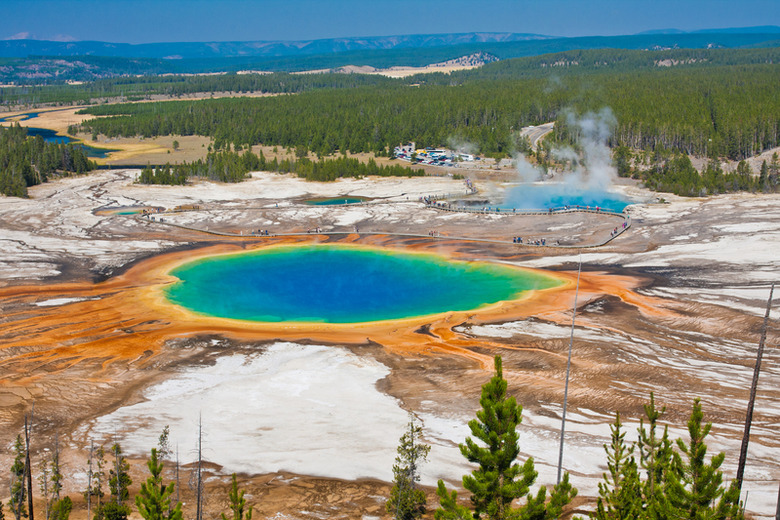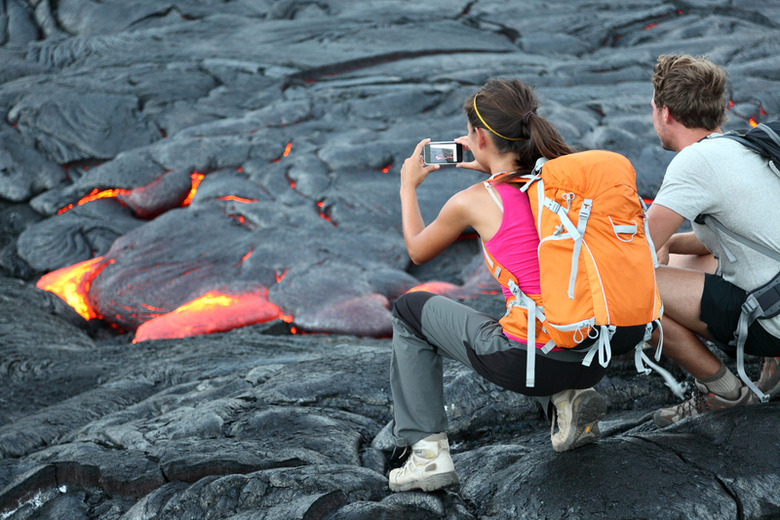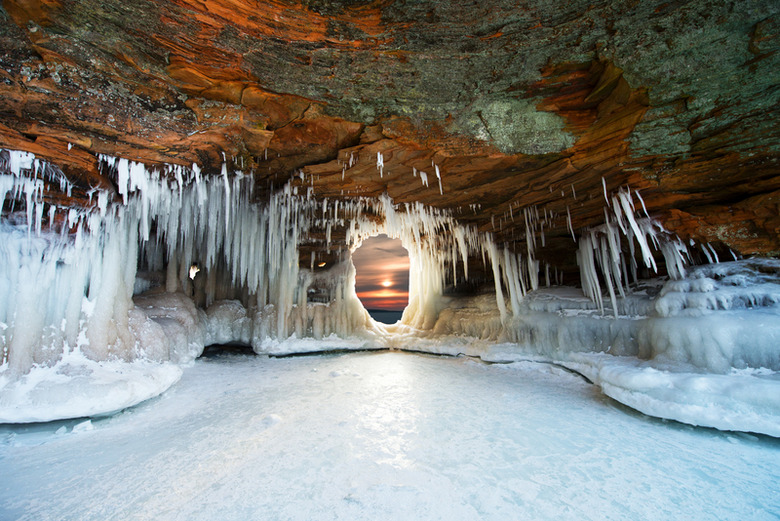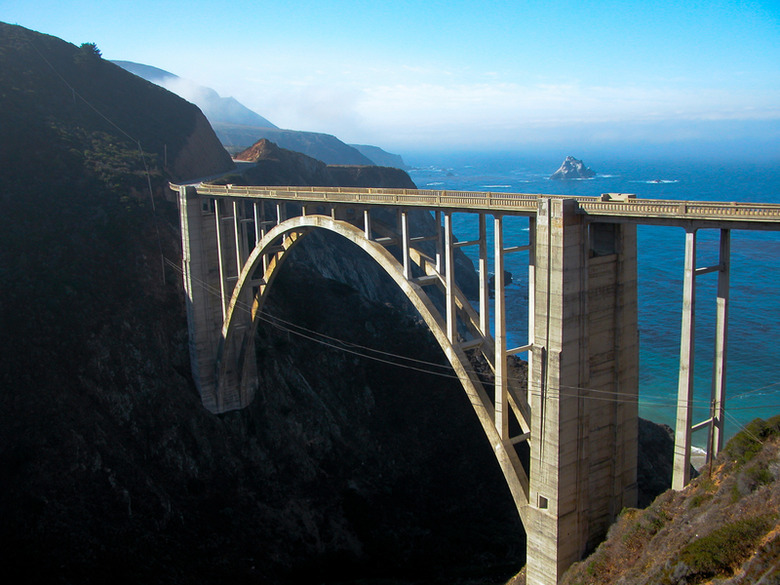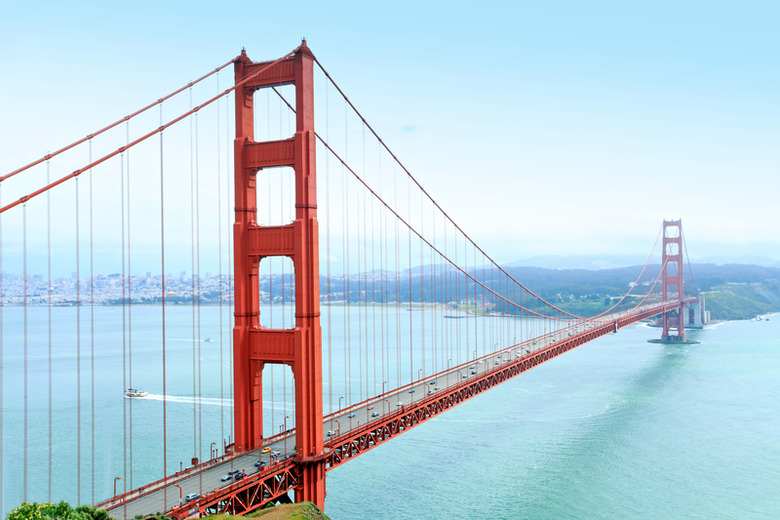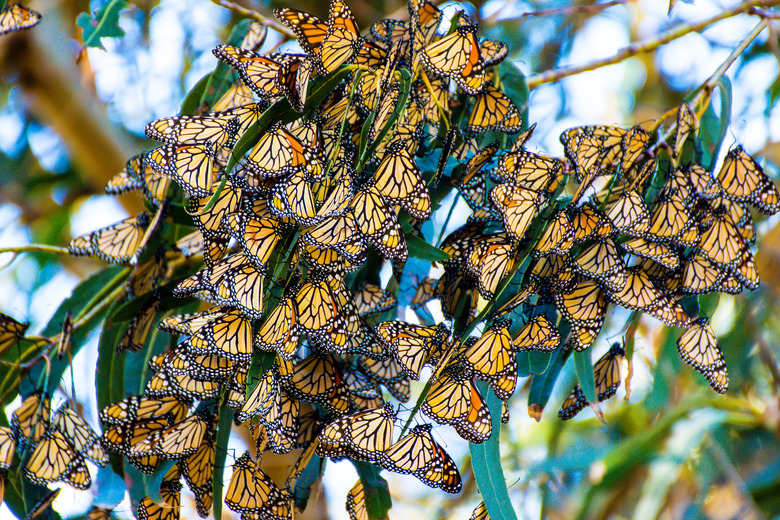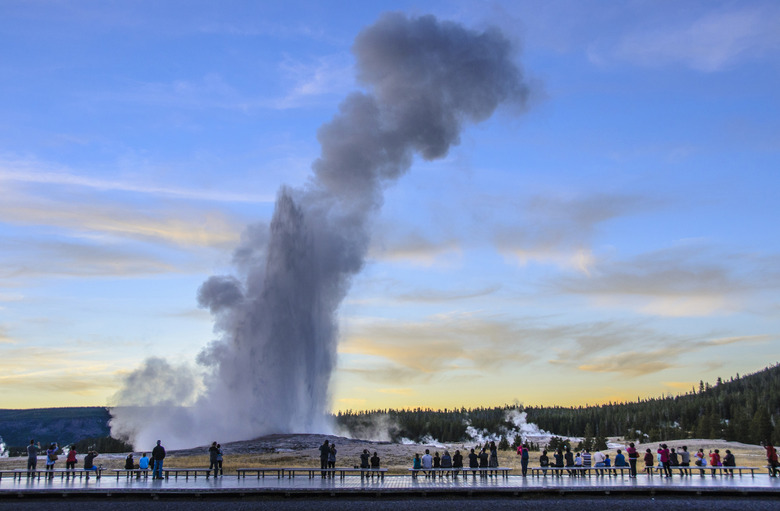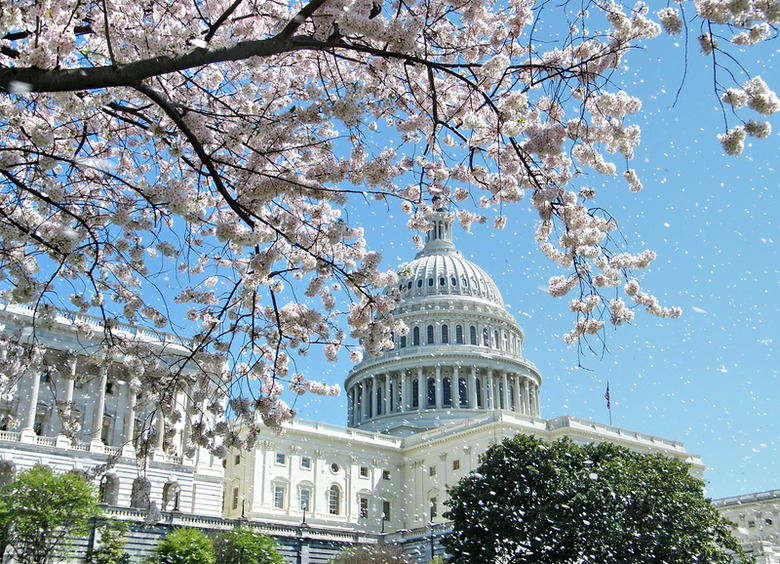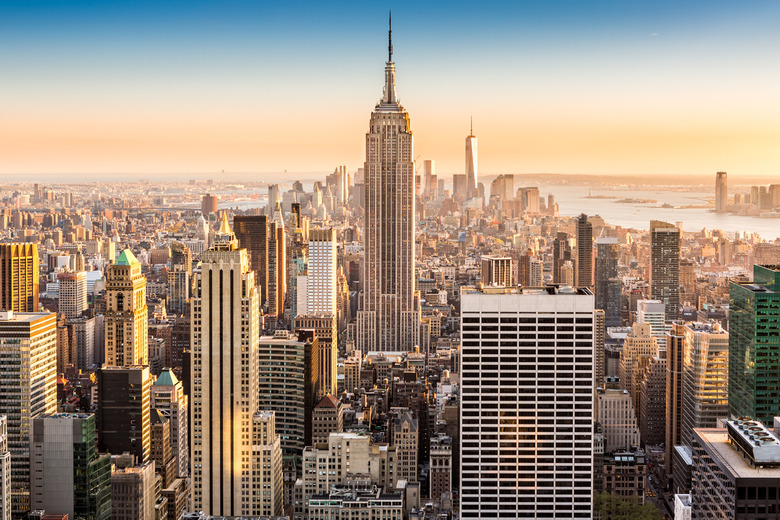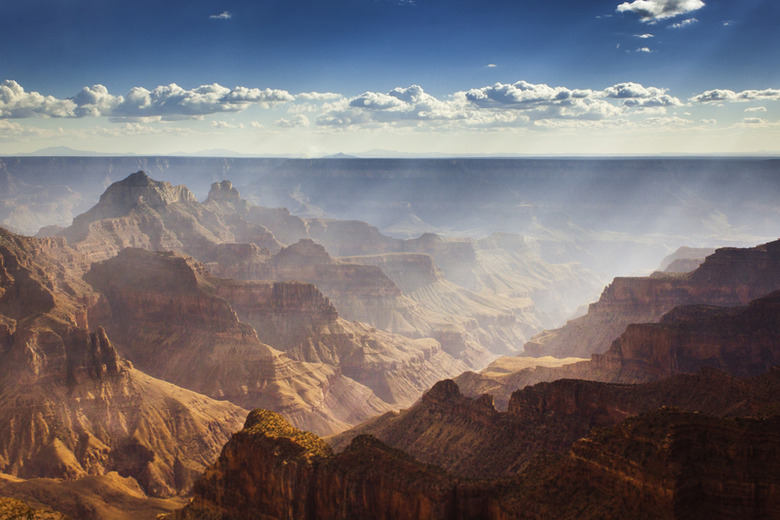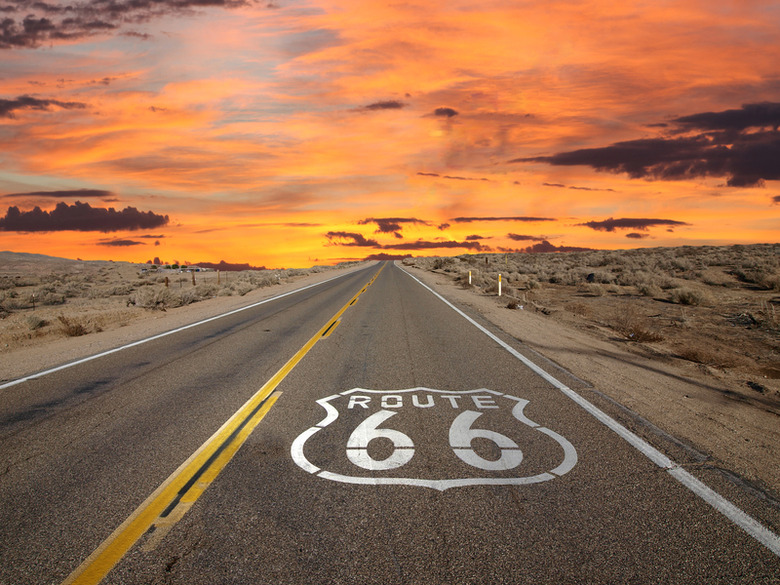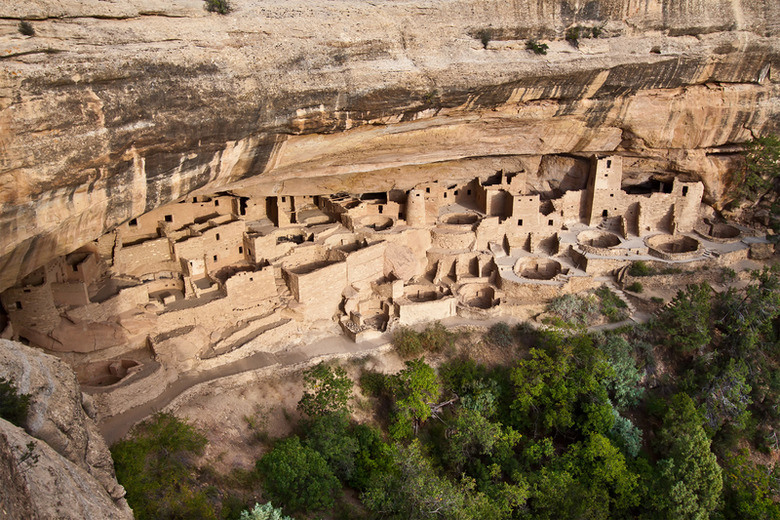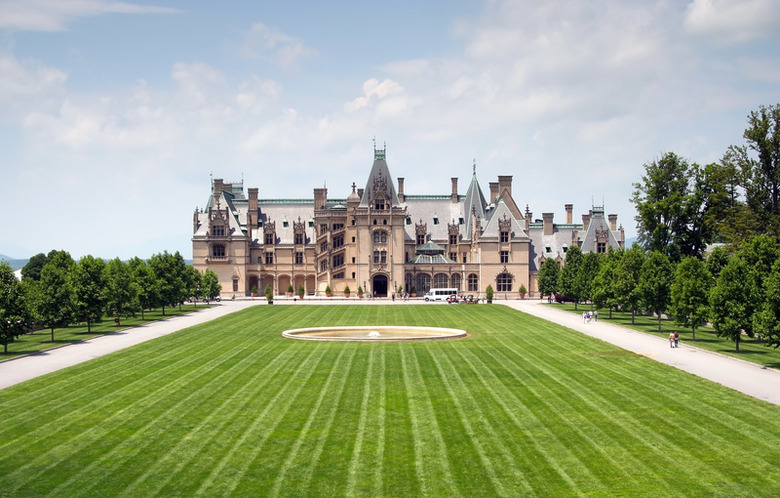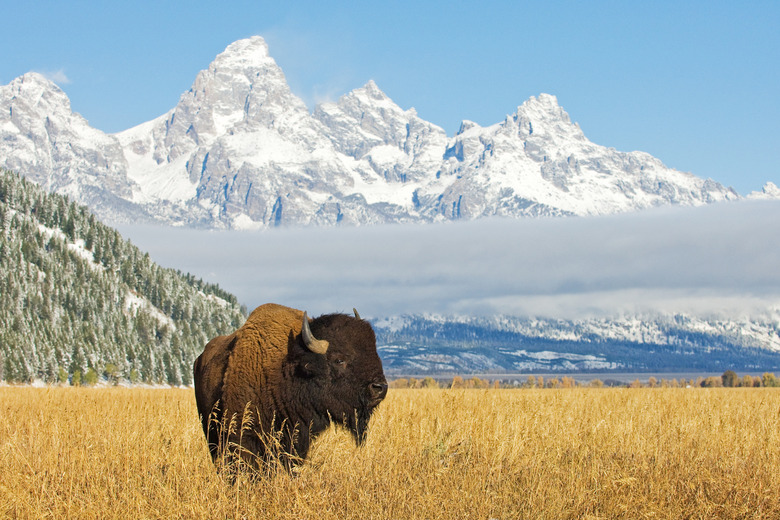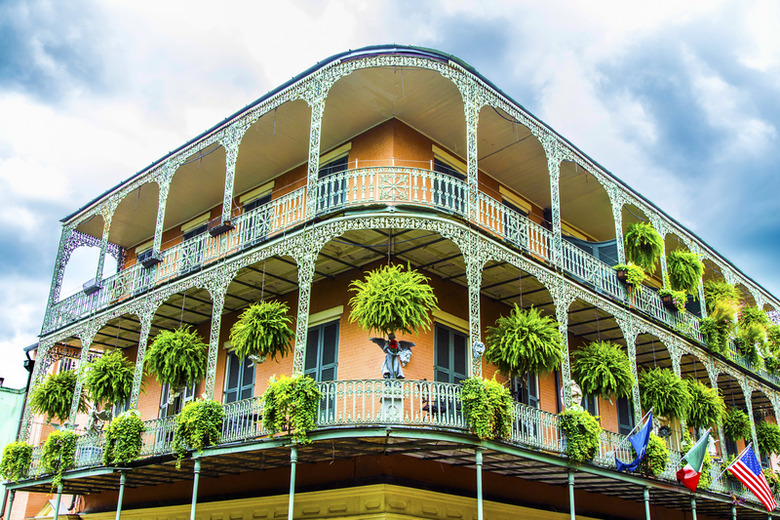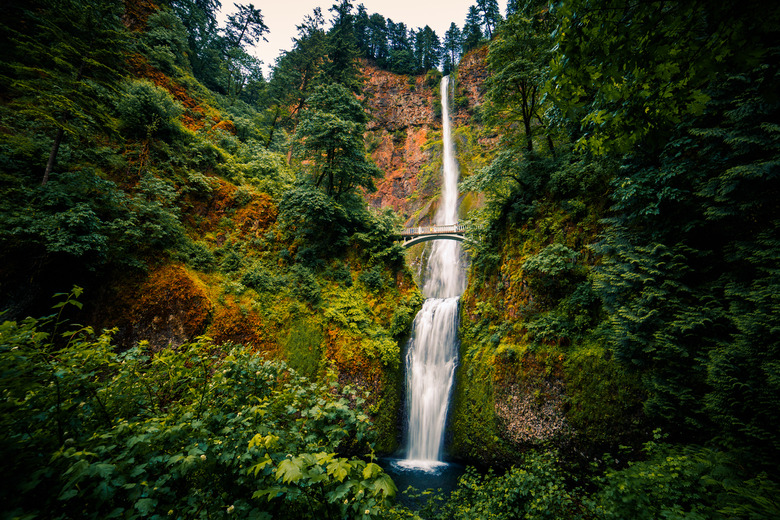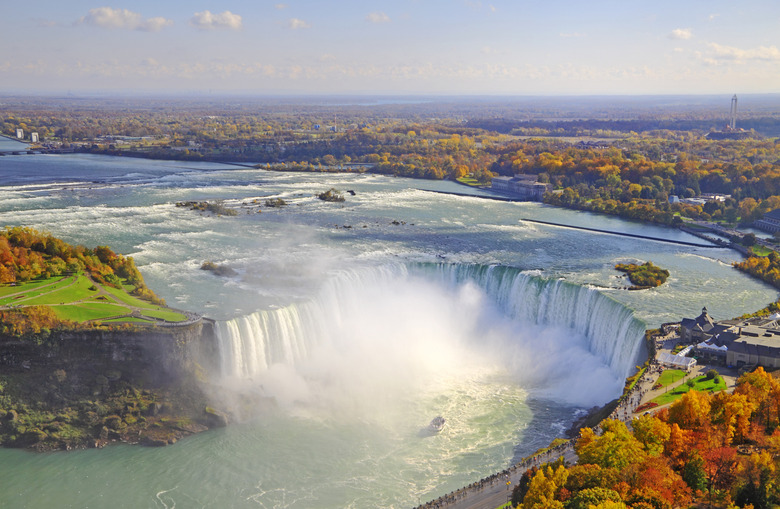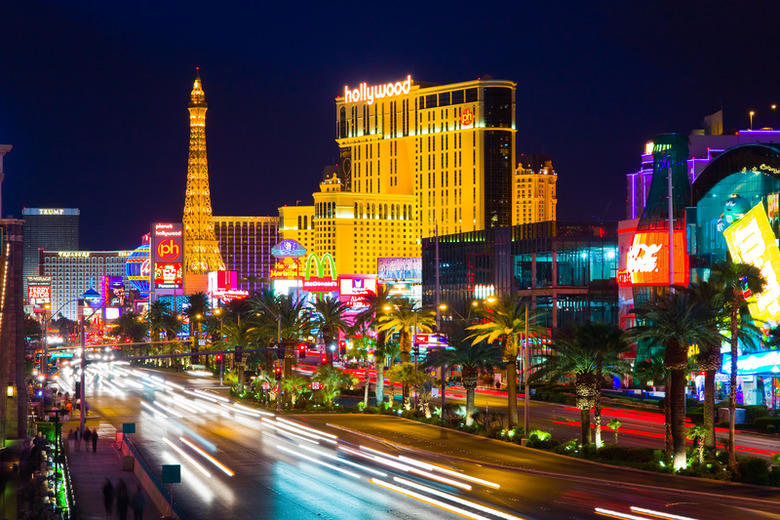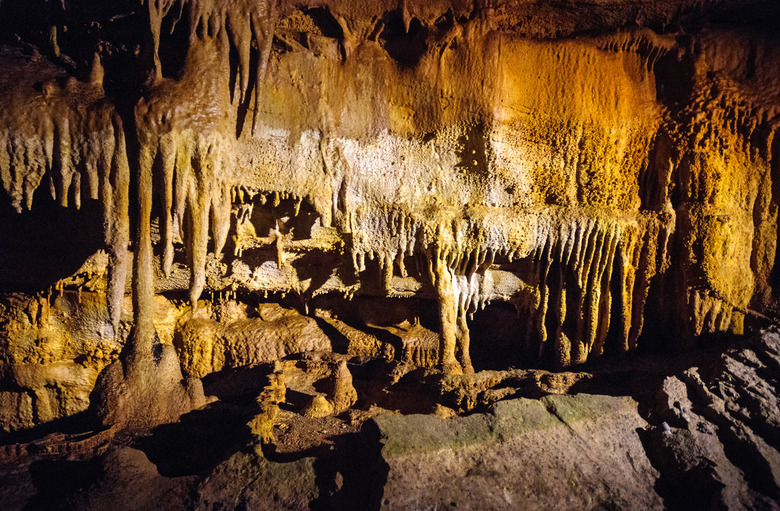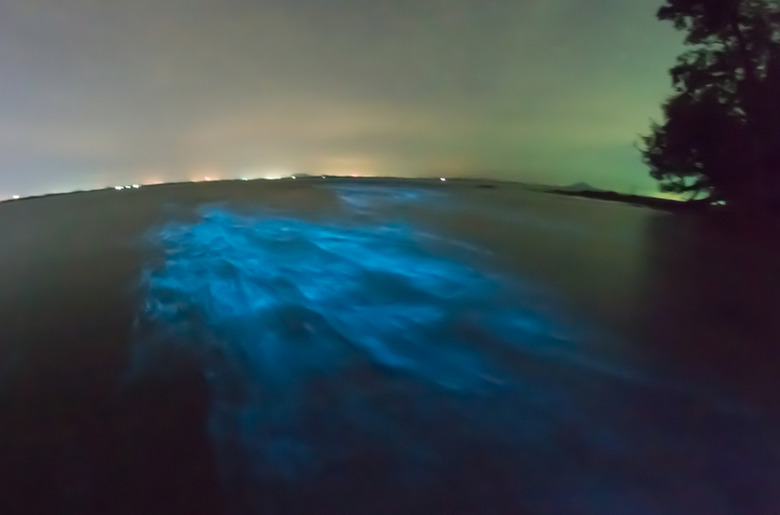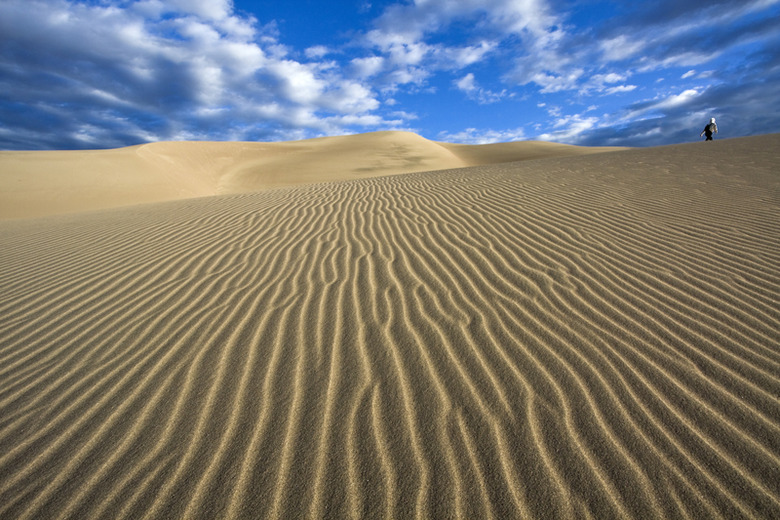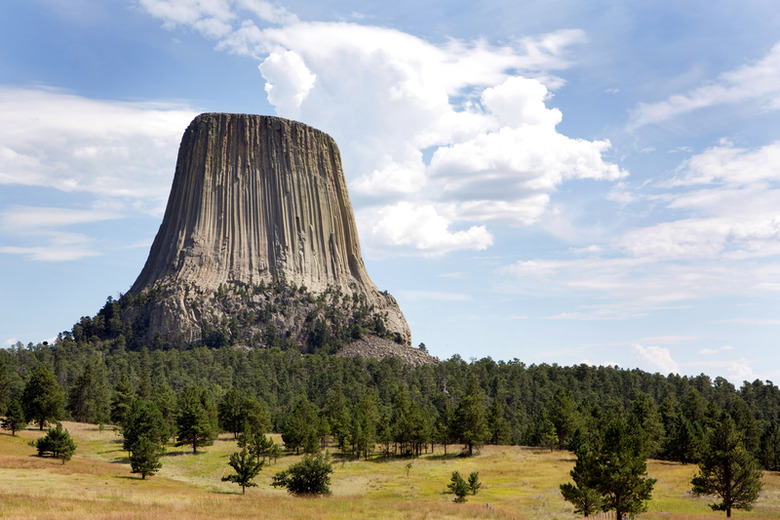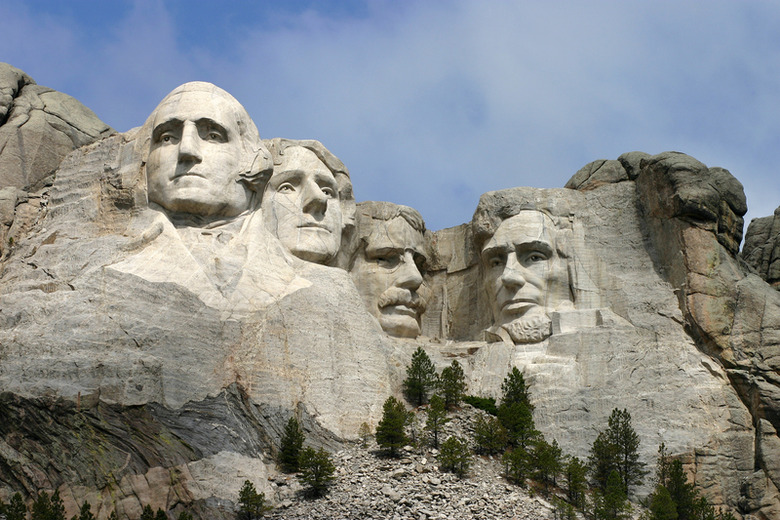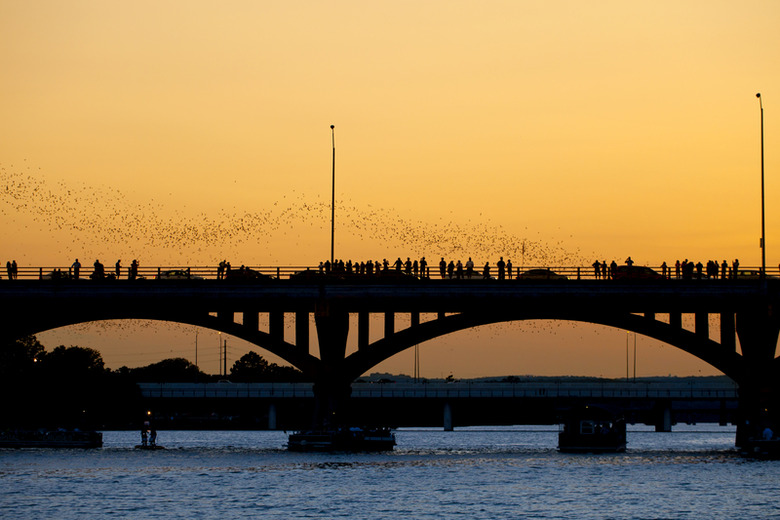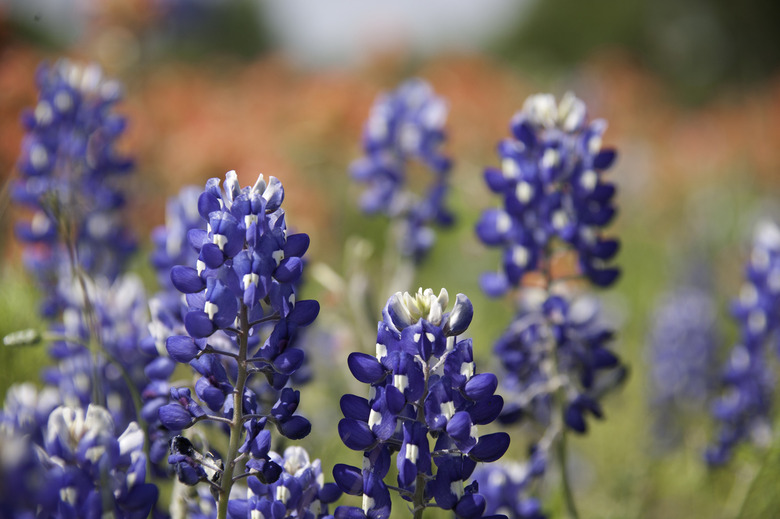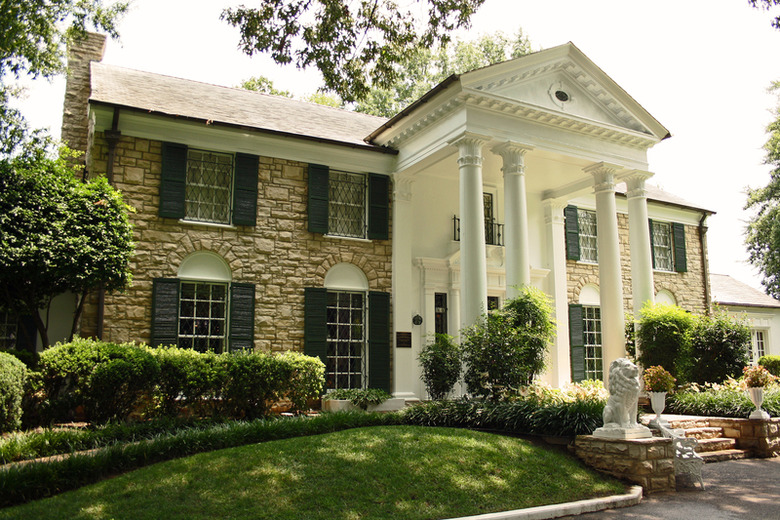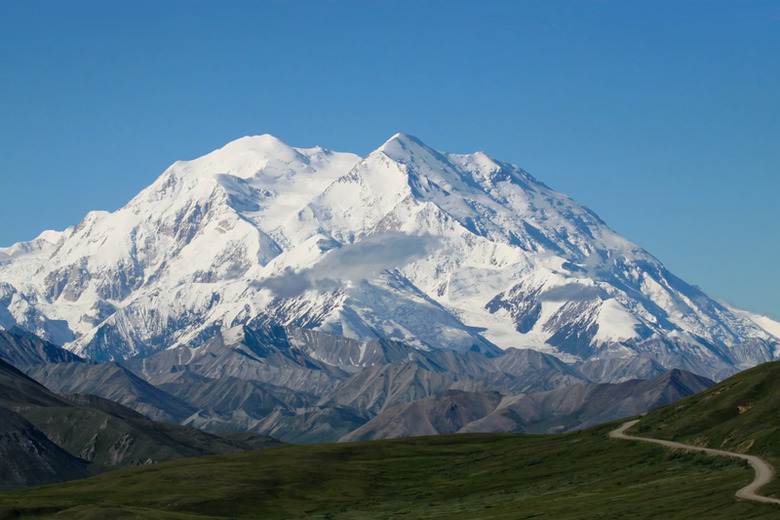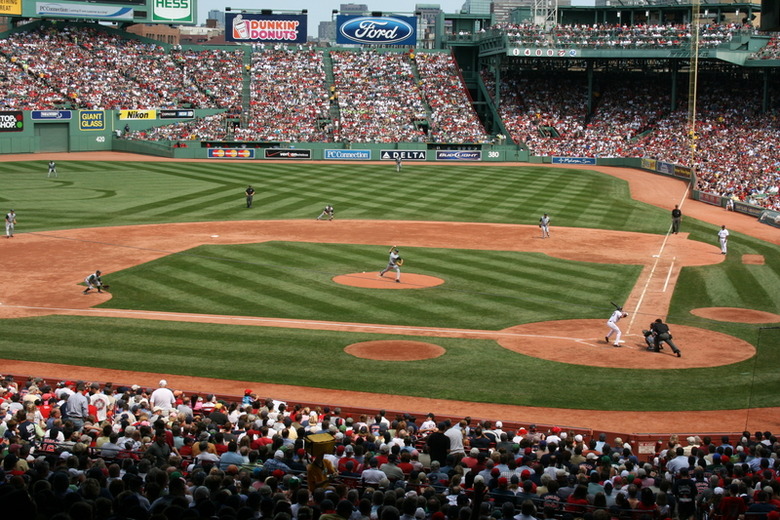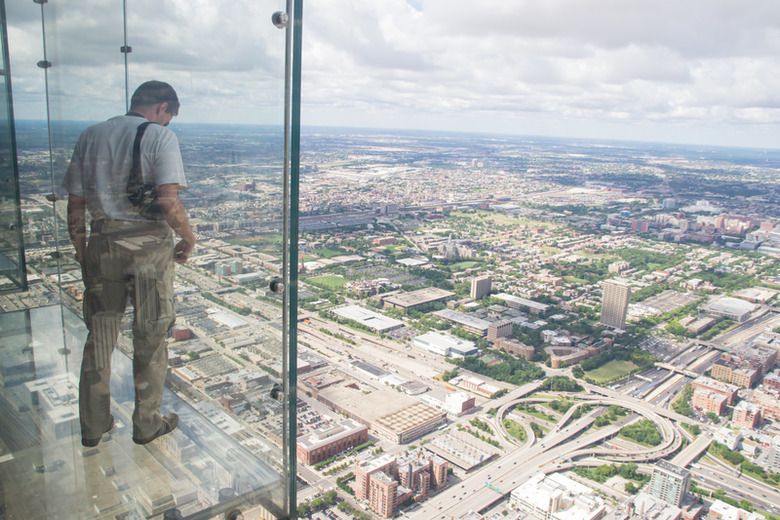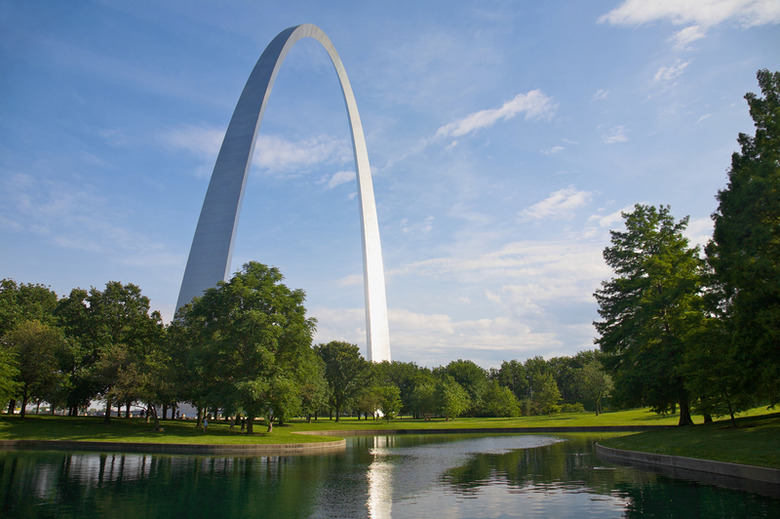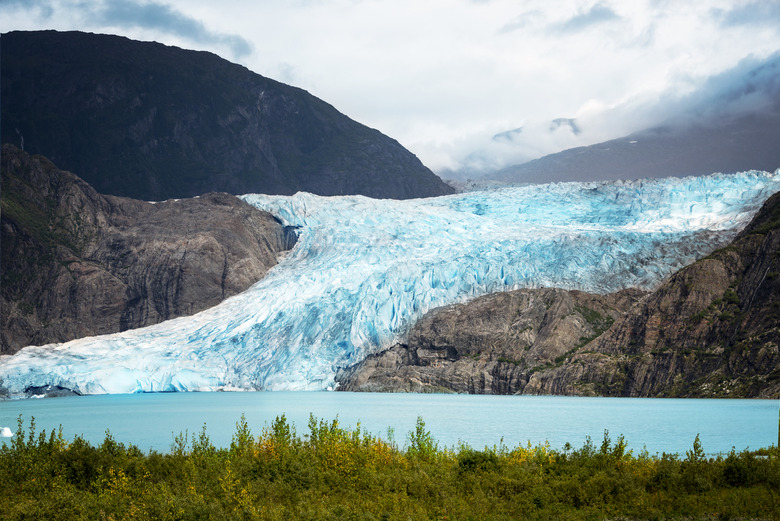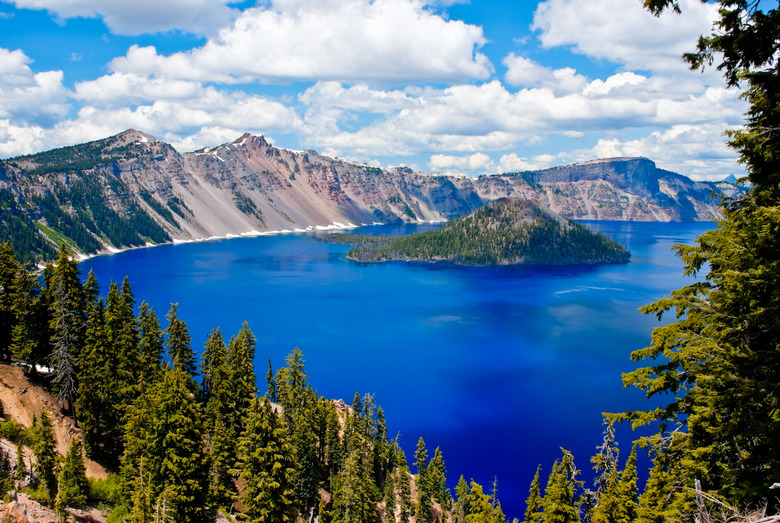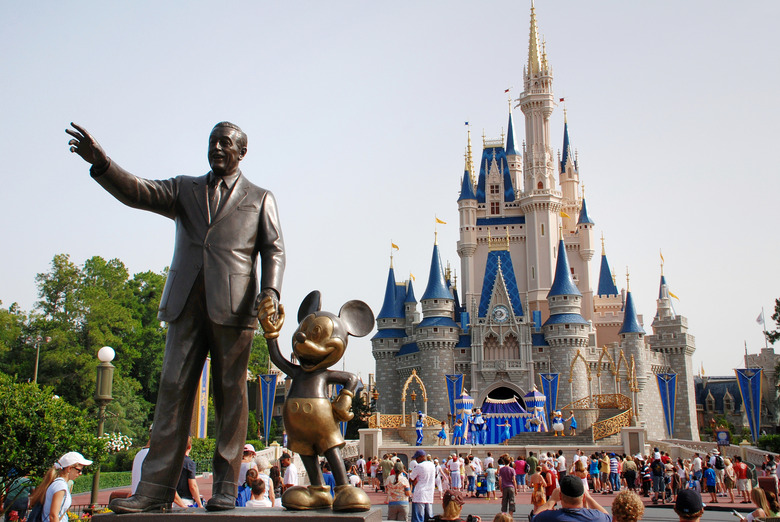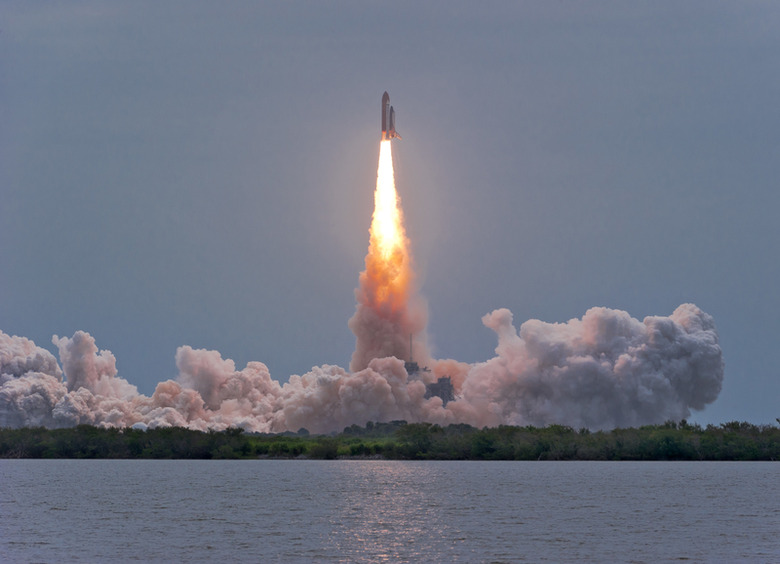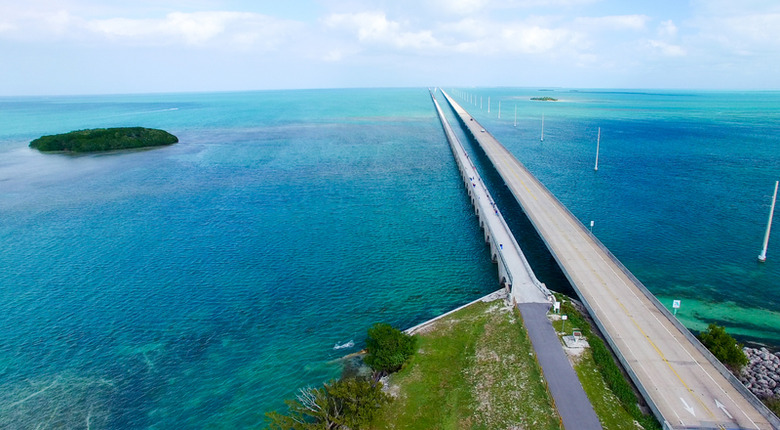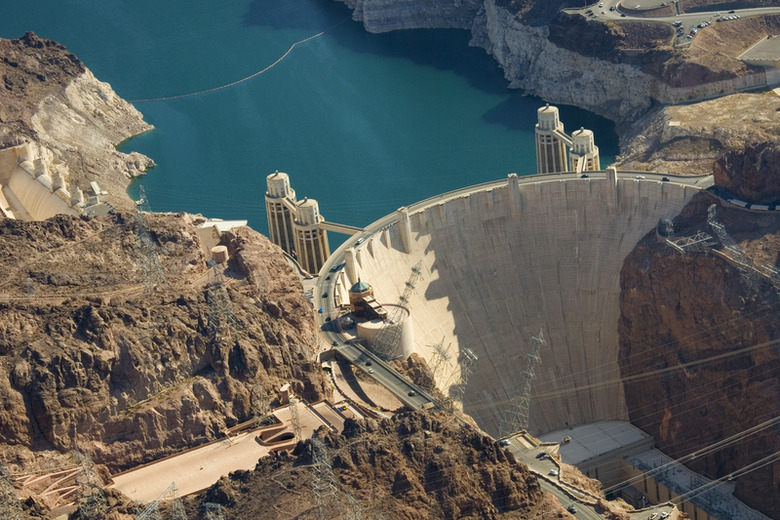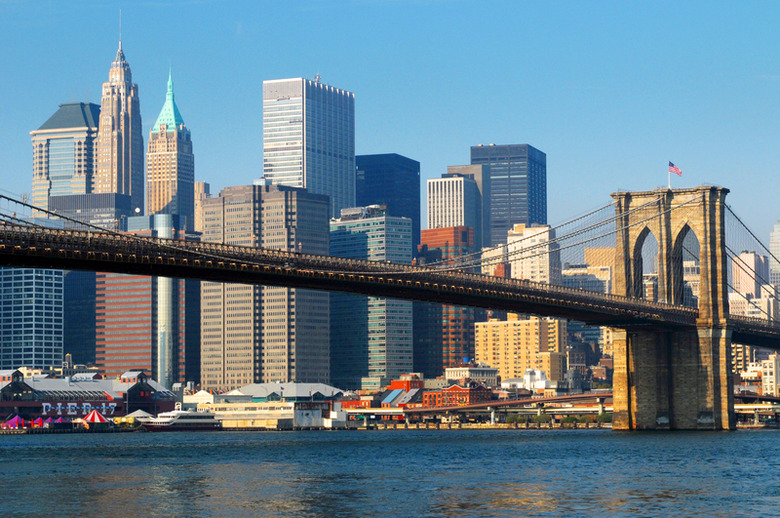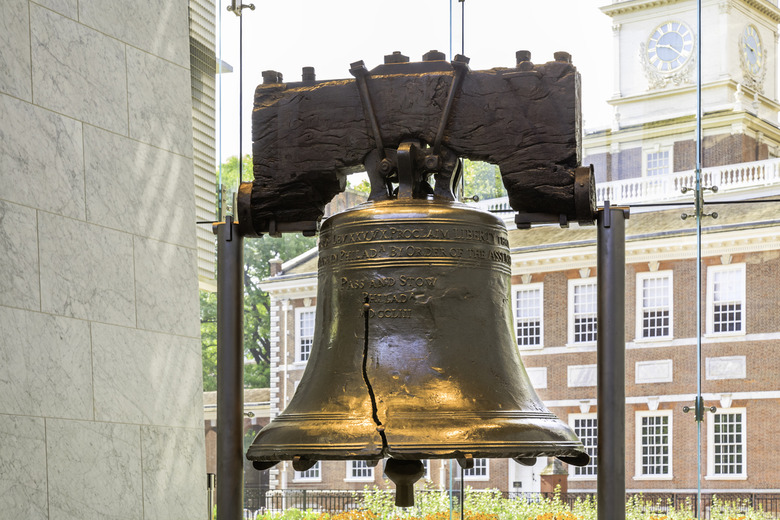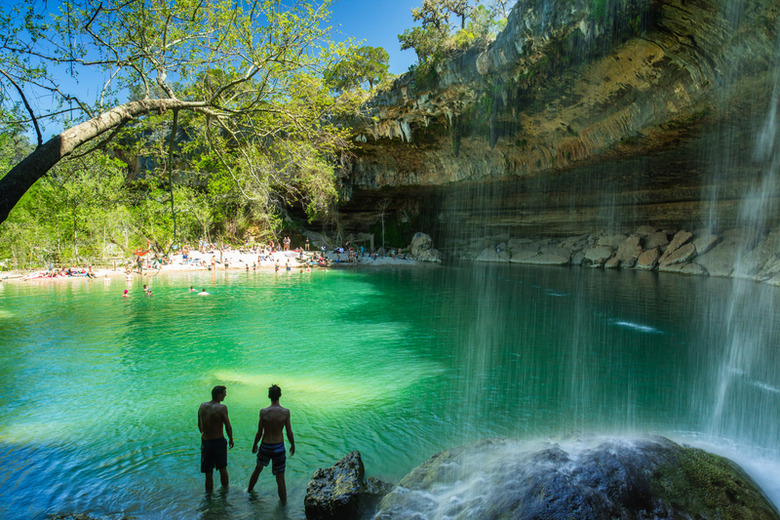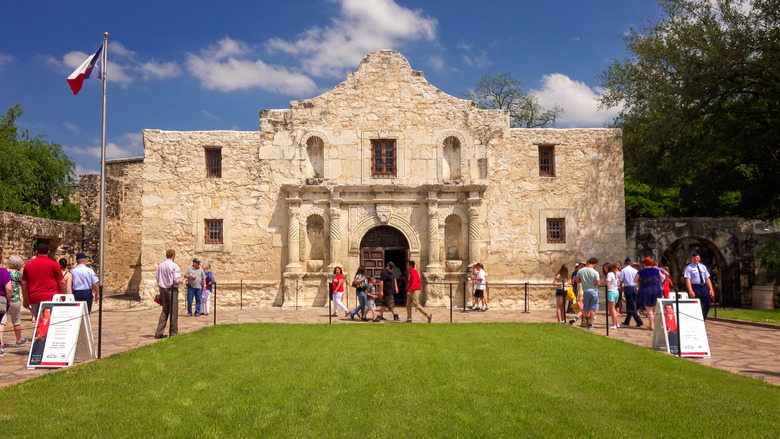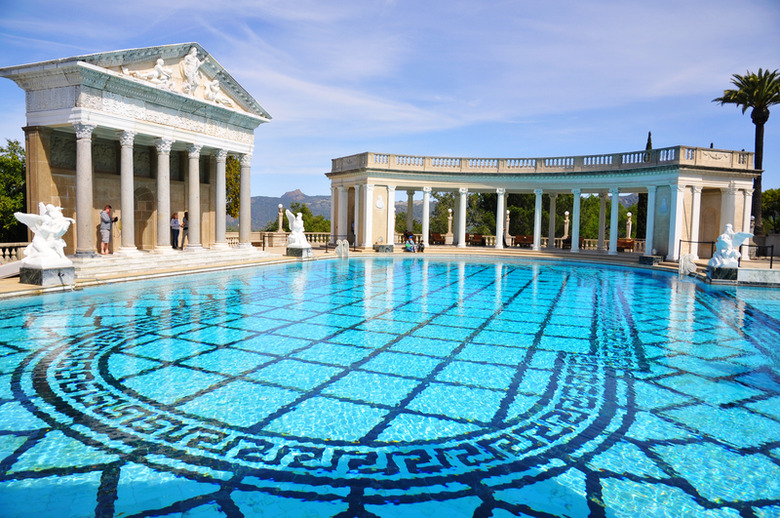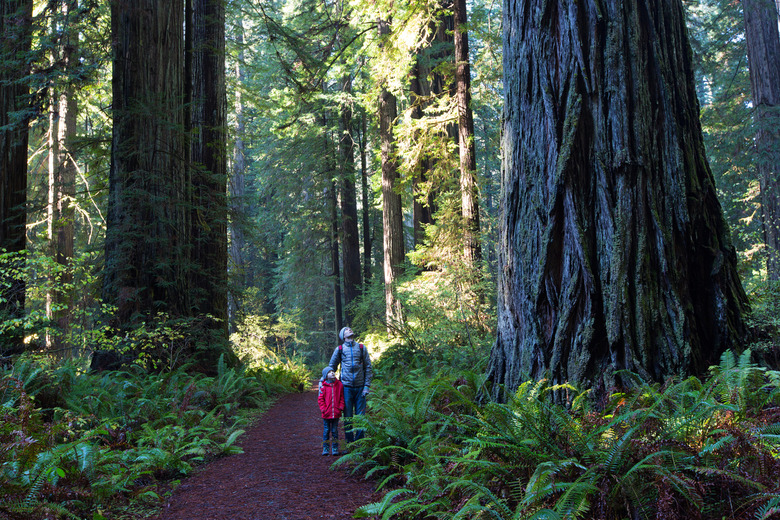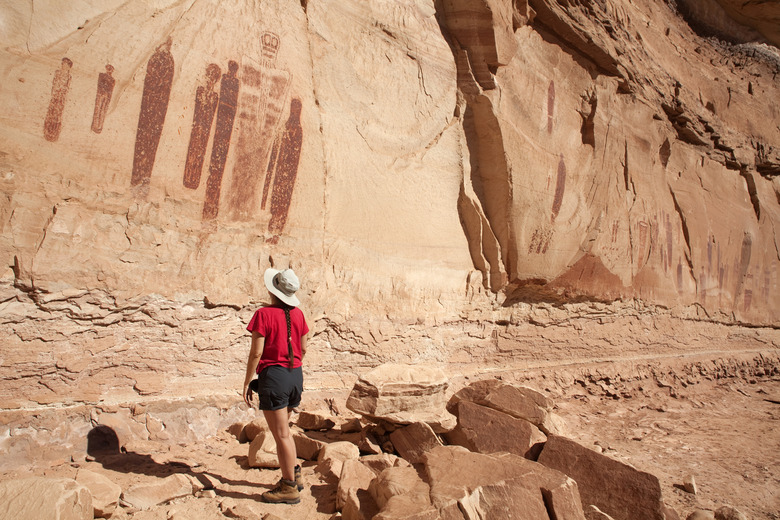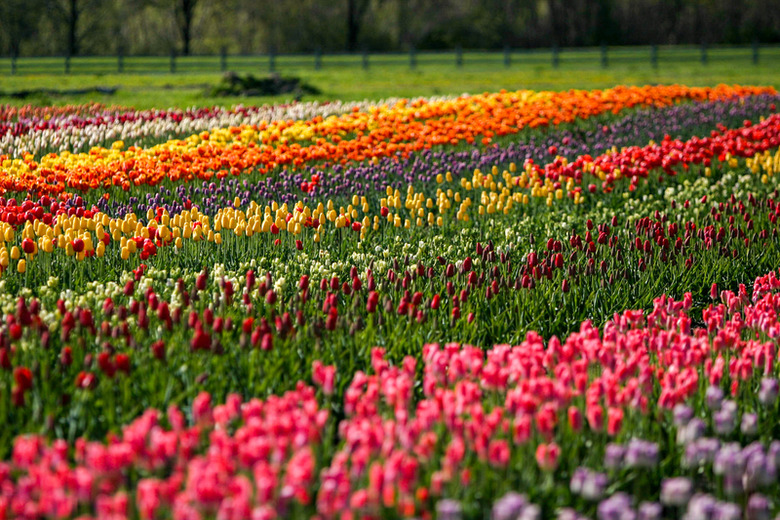Don't Leave These US Eye-Poppers Off Your Bucket List
Don't leave these U.S. eye-poppers off your bucket list
From sea to shining sea, America is full of beautiful sights that will take your breath away. Despite our country's relatively young age, it is home to amazing architecture, archaeological sites and monuments.
And because of its vastness, it also features stunning natural phenomena from mountains and glaciers to beaches and sand dunes that rival the biggest and best in the world.
Whether they're innovations of man or marvels of Mother Nature, here are 49 can't-miss attractions across the country worth planning a vacation to see.
Alaska Northern Lights
While the aurora borealis, also known as the Northern Lights, can be seen from the continental United States, Alaska is considered to be the best place in America to see this stunning sky phenomenon. The city of Anchorage is a great place to see it, but a quick trek outside the city to Denali National Park provides clear, awe-inspiring views without any light pollution.
Grand Prismatic Spring
Located in Yellowstone National Park's Midway Geyser Basin, Grand Prismatic Spring is America's largest hot spring and the third-largest in the world. Besides its size, it reflects the entire rainbow spectrum just like a prism. It's blue center spreads into a red ring around the edge. The color shift is due to microorganisms in the water, which aren't present in the center due to its extreme heat. The spring changes color throughout the year as the water's temperature changes.
Hawaii Volcanoes National Park
The Hawaiian islands are a gorgeous destination on their own, with miles of beaches and lush tropical forests to explore. But no visit to Hawaii would be complete without a visit to Volcanoes National Park to see the islands' two giant, active volcanoes. Kilauea is one of the most active volcanoes in the world, it has erupted continuously since 1983. Its neighbor, Mauna Loa, is the world's biggest above-water volcano and has been estimated to have been erupting for 700,000 years. Visitors to the park can see lava flows and peer into the bubbling openings of the volcanoes. The park was closed for a short time in 2018 due to earthquakes and eruptions, but it has reopened.
Apostle Islands
The Apostle Islands are a group of 21 islands on Lake Superior off the coast of Wisconsin. While the area is great for hiking and camping, its true hidden gems are the sea caves tucked along the islands' coasts. During the winter, the lake freezes solid and you can walk across to see the caves dripping with frozen icicles and waterfalls frozen into ice ripples, columns and curtains.
Pacific Coast Highway
One of the best scenic drives winds along the Pacific Coast of the United States for almost 150 miles. Part of State Route 1, the Pacific Coast Highway is protected as an All-American Road and a National Scenic Byway for its natural and scenic value. It starts in Monterey, and passes through Big Sur, crossing the historic Bixby Bridge and hugging the cliffs for unsurpassed views before ending in Morro Bay.
Golden Gate Bridge
The Golden Gate is the the one-mile-wide strait connecting San Francisco Bay and the Pacific Ocean, and the bright red-orange suspension bridge that spans it has become an iconic symbol of California, the West Coast and the United States. Described as "the bridge that couldn't be built" because of the forces working against it, it was successfully completed in 1937 and has become the most photographed bridge in the world.
Monarch migration
One of the most brilliant North American butterflies is the orange-and-black monarch, which migrates south for the winter in waves by the millions. They travel for thousands of miles from Canada to Mexico, passing through areas from California to Texas to Florida, though they have favorite stopping points along the way. Most of these spots are in national wildlife refuges, where you can get a front-row seat to admire this magnificent natural display.
Old Faithful
Yellowstone National Park is home to about 60 percent of the world's geysers, including one of the most famous, Old Faithful. This highly reliable geyser has lived up to its nickname, with its eruptions only minorly changing in regularity over the last 30 years. The geyser erupts every 60-110 minutes, shooting water a staggering 100-180 feet into the air.
Washington cherry blossoms
The most famous place for enjoying cherry blossoms in the United States is Washington, D.C. At the National Cherry Blossom Festival from mid-March to mid-April each year, more than 3,000 trees around D.C. bloom. Capital monuments provide a beautiful backdrop for these delicate harbingers of spring.
Empire State Building
Manhattan's Empire State Building might be New York City's, if not the country's, most famous skyscraper. With 102 stories and standing a total of 1,454 feet, it was the world's tallest building for 40 years after it was completed in 1931. A National Historic Landmark and one of the the American Society of Civil Engineers' Seven Wonders of the Modern World, the building's 86th and 102nd floor observation areas offer 360-degree views of NYC.
The Grand Canyon
The most immense, impressive geological feature in America might be the Grand Canyon. This mile-deep, 277-mile long and 18-mile wide canyon was carved out by the Colorado River over millions of years. This feat of nature is breathtakingly beautiful, with a rich history and amazing adventure opportunities.
Route 66
Nicknamed the Main Street of America or the Mother Road, Route 66, which officially doesn't exist anymore, is perhaps the most iconic and influential road in the country. Traversing even a portion of it is an American rite of passage because the route is a rich, living museum of the country's culture.
Cliff Palace
Though America as a country is relatively young, it was inhabited long before Europeans arrived by native peoples with rich, fascinating cultures. One remarkable achievement of Native American engineering is the grand pueblos and carved cliffside dwellings constructed by southwestern tribes. Colorado's Mesa Verde National Park is home to some of the best preserved of these ancient sites, including Cliff Palace, the largest cliff dwelling in North America.
Biltmore Estate
America's largest home is an opulent sight to behold. Built by George Vanderbilt in 1895, the Biltmore Estate in Asheville, North Carolina, is open to the public but still a privately owned house. The French Chateauesque mansion has a total of 250 rooms, a banquet hall, a library with over 10,000 volumes and luxurious European paintings, tapestries and furniture, which have been preserved. The estate offers an amazing glimpse of the life of one of the richest Americans during the Gilded Age.
American safari
Swahili for "journey," safaris as a concept might've originated in Africa, but you can go on a safari right here in America to see some amazing native animals that some of us might take for granted. The Four Seasons in Jackson Hole, Wyoming, as well as other companies offer safaris of Grand Teton National Park. This extraordinary, pristine mountain terrain is home to an array of majestic animals, including bison, wolves, grizzly bears, mountain lions and bighorn sheep.
French Quarter
New Orleans' French Quarter neighborhood is considered the unique city's crown jewel as well as one of America's most beautiful historic districts. The oldest section of the city, the French Quarter features a distinct Spanish and French-influenced architectural style and a concentration of historic landmark restaurants and hotels.
Multnomah Falls
Multnomah Falls is a two-tier, 620-foot-tall waterfall in Oregon. Its natural beauty attracts more than 2 million visitors a year, making it the most visited natural recreation site in the Pacific Northwest. The waterfall can be viewed from above by hiking up a trail, or by standing on Benson Bridge, which spans the falls at the first tier's base. Though it's not the tallest waterfall in the country, it does allow visitors to get fairly close to appreciate its majesty.
Niagara Falls
The most famous waterfall in the United States is Niagara Falls, which is actually a group of three falls on the international border between Canada and New York state. One of these, Horseshoe Falls, is the most powerful waterfall in North America. More than 6 million cubic feet of water goes over the crest of the falls every minute, making for an epic sight.
Las Vegas strip
The neon lights, lavish casinos and grand fountains that line the Las Vegas strip are iconic and world-famous. In fact, the Strip is protected by the U.S. government for its cultural significance. Tourist travel from all over the world to see the one-of-a-kind street. You don't have to gamble to appreciate Vegas's glitz and glamour.
Mammoth Cave
The world's longest cave system, Mammoth Cave stretches for more than 400 miles underneath central Kentucky with certain stretches yet to be surveyed. New discoveries add miles more to the system each year. While many routes and features have been lit with electric lights, some tours allow visitors to marvel at the massive cave by paraffin lamp and explore off-the-beaten-path areas.
Mosquito Bay
There are only a few bioluminescent bays in the world, and one of the best and most brilliant is Mosquito Bay in Vieques, Puerto Rico. Congregations of dinoflagellates, a type of single-celled plankton, in the bay glow when disturbed, so movement from fish, boats or your hand leaves a trail of otherworldly blue-green. Puerto Rico actually has three different bioluminescent bays but the ecosystem of the shallow Mosquito Bay allows for the brightest display.
Indianapolis Motor Speedway
Even non-sports fans will be impressed when they attend an event at the Indianapolis Motor Speedway, the highest-capacity sports venue in the world. It can accomodate 235,000 spectators for two of the biggest races in motorsports: the Indy 500 and NASCAR's Brickyard 400. The IMS oval spans 253 acres, and Churchill Downs, Yankee Stadium, the Rose Bowl, the Roman Colosseum and the Vatican could all reportedly fit inside.
Iditarod
While the Indy 500 might be an icon of American motorsports, the U.S. is home to another legendary race worth experiencing in person. The Iditarod Trail Sled Dog Race held in Alaska each year spans 1,000 miles of wilderness, but spectators can watch the first 11 miles of the route through Anchorage. The race, started in 1973, is both a fantastic feat to behold as well as tribute to state's history, sled dog culture and Alaskan huskies.
Kentucky Derby
Another legendary American race you should see in your lifetime is the Kentucky Derby. It's been held every spring at Churchill Downs in Louisville, Kentucky, continuously since 1875. More than 155,000 people each year flock to the race track to place their bets as well as don extravagant hats and sip mint juleps. These traditions set this race apart from others in the U.S.
Star Dune
At 750 feet, Star Dune is the tallest dune in North America and sits in southern Colorado's Great Sand Dunes National Park and Preserve. The park is home to five dunes in total that stand over 700 feet tall. These steep hills are ideal for sports such as sand boarding, sand sledding and dune buggying. The dunes bump up against Medano Creek, a shallow swimming area that makes you feel like you're at a inverse beach, according to Travel Channel.
Devils Tower
Notably featured in the classic sci-fi film "Close Encounters of the Third Kind," Devils Tower in northeastern Wyoming is worth traveling to even if you're not being summoned there by aliens. This geological feature, considered sacred by some Native American tribes, is an 86-foot-tall butte that was established as a National Monument in 1906. The sheer, cracked rock face of Devils Tower can be climbed, and hundreds of intrepid climbers scale it every year.
Mt. Rushmore
This National Memorial sculpture in the Black Hills of South Dakota features the 60-foot-high faces of U.S. presidents George Washington, Thomas Jefferson, Theodore Roosevelt and Abraham Lincoln. Originally conceived as a way to promote tourism in the region, the sculpture is truly an American icon and a symbol of the country's storied past as well as an impressive artistic feat.
Congress Avenue Bridge bats
Much like monarchs, bats travel by the millions. They emerge from their roosts at twilight en masse to hunt for insects, making for a spectacular natural display. Austin, Texas, is home to the largest urban bat colony in the world. More than 1 million Mexican free-tailed bats set up shop every summer under the Congress Avenue Bridge, which is 10 blocks south of the Texas State Capitol. Watch the nightly show from the bridge's observation center or by boat on the river.
Texas Hill Country bluebonnets
More so than bats, bluebonnets have become synonymous with Texas. Not only have they been the official state flower since 1901, but the tall, richly colored wildflowers burst forth every spring in the millions, taking over roadsides throughout the heart of the Lone Star State. There is no one place to admire this spring display, but the most concentrated area of flowers is the Bluebonnet Trail, which includes its namesake flower as well as Indian paintbrushes, sunflowers and black-eyed Susans.
Graceland
Elvis Presley's outrageous estate must be seen to be believed. Located in Memphis, Tennessee, on more than 13 acres of land, Graceland is the country's second-most visited home behind the White House. The rock 'n' roll legend bought the house in 1957 and continually modified it, adding a swimming pool, a recording studio, a racquetball court, a stable, a shooting range and the famous wrought-iron front gate shaped like sheet music. The house attracts visitors from around the world who want to get an inside look at the life and death of one of the country's most famous musicians.
Denali Peak
Denali, formerly known as Mt. McKinley, in Alaska is the highest mountain peak in North America. When measured from base to peak, it is the tallest mountain on Earth, beating out Mt. Everest by about 6,000 feet. One of the "Seven Summits," it is a must-climb for mountaineers. Experience is required to tackle it; Denali takes about two to four weeks to climb and only 60 percent of climbers reach the summit. Despite the rigor and danger, the reward is a once-in-a-lifetime experience and awe-inspiring views.
Fenway Park
For sports fans, this historic home of the Boston Red Sox can't be missed. Fenway opened in 1912, making it the oldest Major League Baseball stadium currently in use. In 2012, it was added to the National Register of Historic Places. Despite lacking some modern amenities, the stadium has a history and ambiance that will captivate even those with a passing interest in America's national sport.
Willis Tower
Chicago is known for its architectural history and marvels, and one of its most iconic buildings is the Willis Tower. Completed in 1973, the Willis Tower, formerly called the Sears Tower, was the tallest building in the world for almost 25 years and was the tallest building in the Western Hemisphere until 2014. The tower's observation deck on the 103rd floor features a clear glass overhang 4 feet out from the building that visitors can stand on to "float" above the street below. The view from the deck spans four different states.
Gateway Arch
The Gateway Arch in St. Louis is the tallest arch in the world and the tallest manmade monument in the Western Hemisphere. The arch is a symbolic "gateway to the West." Visitors can take a tram up 63 stories to the top of the arch, which has a view of up to 30 miles to the east and west.
Mendenhall Glacier
Mendenhall Glacier is a 12-mile-long ice-blue glacier that sits outside the capital city of Juneau, Alaska. You can climb the glacier, but a real treat lies for those willing to follow a hollow tunnel into its core. Underneath the glaciers are ice caves, where intrepid adventurers can hear the glacier groan as it shifts and watch a surreal, otherworldly show as the light on the outside shifts to illuminate the caves with changing shades of blue.
Crater Lake
Crater Lake is the the deepest lake in the country. Located in Oregon, it was formed after a volcanic eruption in which a mountain peak collapsed. Fed solely by rain and snowmelt, it's famous for its clear, sapphire blue waters, which are considered some of the purest in the world.
Florida theme parks
Some Americans might take for granted that the U.S. is home some of the world's biggest and best theme parks. Florida has the highest concentration of top theme parks, making it an ideal bucket list destination to hit up as many as possible. With Walt Disney World, Universal Studios, Busch Gardens, LEGOland Florida and SeaWorld all within driving distance, it's the ideal destination for a fun family vacation.
Kennedy Space Center
Kennedy Space Center is the main launch site for NASA, sending off manned, robotic and commercial crew missions. The Visitors Complex allows visitors to marvel at retired rockets, including the Atlantic space shuttle, although the best time to visit is when there's a scheduled launch. Although NASA has ceased launching manned missions, you can still see research rockets from the likes of SpaceX blast into space.
Overseas Highway
This scenic highway makes up the southernmost leg of U.S. 1 and connects the Florida Keys to the Florida mainland. The road is made up of 42 overseas bridges across 113 miles that pass over bright blue waters filled with coral reefs, shipwrecks and marine life, making it one of the most scenic drives in the country.
Hoover Dam
The Hoover Dam, located on the Colorado River at the border between Nevada and Arizona, became a cultural symbol of human ingenuity after its completion in 1935 during the Great Depression. Named after Herbert Hoover, the dam became one of America's Seven Modern Civil Engineering Wonders in 1994. It is capable of irrigating 2 million acres and can generate enough electricity to power 1.3 million homes. The water it stores in Lake Mead makes it the world's largest reservoir.
Brooklyn Bridge
Crossing the East River to link Brooklyn and Manhattan, the Brooklyn Bridge is an icon of the New York City skyline and one of the country's oldest roadway bridges. This feat of engineering opened in 1883 held the title of the tallest structure in the Western hemisphere for several years. Today, it still offers amazing views of Brooklyn, Manhattan and the Statue of Liberty, which you can see by driving or taking the pedestrian walkway.
Liberty Bell
Philadelphia's Independence National Historical Park is a must-visit stop to experience the historically important sites and symbols of American Independence. Formerly housed atop the Pennsylvania State House, where the Declaration of Independence was approved, the distinctively cracked Liberty Bell is now displayed across the street in the Liberty Bell Center. First cast in 1752, the Liberty Bell still inspires feelings of patriotism today.
Hamilton Pool
Considered one of the world's most beautiful swimming holes, Hamilton Pool Preserve is located just outside Austin, Texas. The pool has naturally cool water and a 50-foot waterfall and was formed when a grotto collapsed to expose the limestone cave below. Chunks of rocks and large stalactites ring around the swimming hole making for unique natural surroundings.
The Alamo
Despite the siege resulting in a loss for the outnumbered Texans at the 1836 Battle of the Alamo, the mission has become an American icon for its role in the Texas Revolution and the iconic battle cry "Remember the Alamo!" Heroes Davy Crockett, James Bowie and William Travis fell at the Alamo, located in present-day San Antonio. Visitors will see parts of the original 1718 mission that still stand today.
Hearst Castle
Technically a mansion rather than a true castle, Hearst Castle was the home of newspaper tycoon William Randolph Hearst and is now a National Historic Landmark. Open to the public since 1958, this gorgeous, grand estate hosted celebrities from Charlie Chaplin to Winston Churchill and includes 56 bedrooms, 127 acres of gardens, tennis courts, a movie theater and a pool with an ancient Roman temple facade imported from Europe.
Redwood National and State Parks
California's Redwood National and State Parks cover 139,000 acres that are home to the tallest trees on Earth. The parks protect the remaining 4 percent of the state's original old-growth coast redwoods, the tallest of which stands at a staggering 379 feet tall. Other sights include a rare albino redwood and three drive-through trees.
Horseshoe Canyon
Prehistoric cave paintings are found in countries such as Spain, France, Indonesia and Argentina as well as the United States. Utah's Horseshoe Canyon is home to ancient rock art from at least 2,000 years ago. The park includes significant examples of pictographs and petroglyphs of life-sized figures that offer an amazing glimpse at America's past.
Tulip Time
You don't have to travel to the Netherlands to see spectacular tulips. The city of Holland, Michigan, celebrates its namesake every year with the Tulip Time Festival. More than 5 million bulbs of every color are planted around the city and bloom in the early spring.
Drive-through zoo
While America is home to plenty of great zoos, the Wild Animal Safari in Pine Mountain, Georgia, offers visitors the closest thing in America to an African safari. This drive-through 3.5-acre park is home to 75 species of animals from around the world, including zebra, bison and camels, as well as unique hybrid species, such as zebroids (part zebra, part donkey) and ligers (part lion, part tiger).
